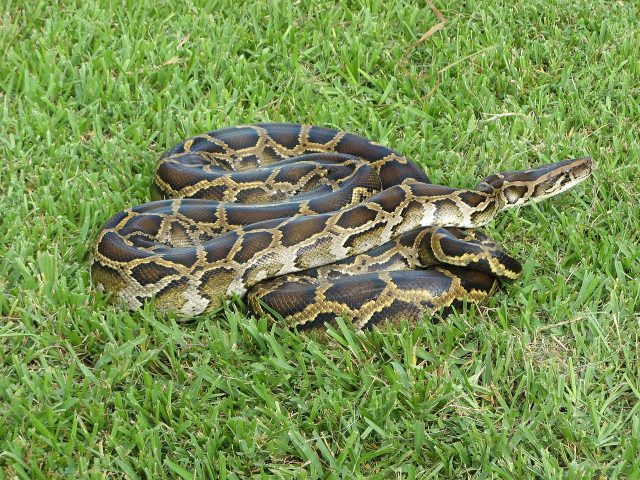Type the name of the breed you're looking for below
[wpdreams_ajaxsearchlite] Don't see the breed your're looking for? Click here and let us know!
Burmese Python
| Place of Origin and Range | Native to Burma, Indonesia. and Malaysia. Can be found along the coast of south eastern United States. |
| Description | This large snake has a tan to brown background marked with irregular dark-edged olive to brown dorsal and lateral blotches. A distinct "spear point" marks the top of the head. |
| Morph Patterns Available | Yes |
| Adult Size | Can grow 12- 14 feet(3.6 - 4.2m) |
| Accommodation | These pythons live in grasslands, savannah, swamp, and sparsely wooded areas. Termite mounds and empty mammal burrows are important habitats for this species. A forested habitat would work best. Not as many branches for climbing as some snakes. These snakes prefer humid hides. Always include a day time basking heat source at 80'F(27'C) and a bathing dish big enough for your snake to climb in.A minimum of 4 feet deep x 8 feet long x 4 feet tall for an adult. |
| Lifespan | Can live 12-20 years |
| Feeding / Diet | Depending on the size of your snake you may require mice, rats, chickens, or rabbits. Frozen feed can be found and is recommended due to health risks with using live food. |
| Breeding | The Burmese python breeds in early spring. A female may lay as many as 100 eggs, in March or April. The average clutch is about 35 eggs. Unlike in most snakes, the female coils around the clutch and stays with the eggs until they hatch. She does not feed during this period, which may last two or more months. Burmese pythons actually incubate their eggs by raising the temperature within the coils by as much as seven degrees above the air temperature. This is accomplished by frequent shivering or muscle spasms. Once the babies hatch, they are on their own and must fend for themselves. They hatch at about 12 to 18 inches (31 to 46 cm) in length. |
| Other Considerations | IUCN has recently listed the Burmese python as "Vulnerable", reflecting its overall population decline. Important reasons for the decline are trade for skins and for food; habitat degradation may be a problem in some upland areas of their native habitat. Snakes are relatively hardy low maintenance animals when kept in the correct environment, and require little day to day care other than feeding and cleaning out the tank as required. However, like all animals, they can still become sick or injured despite our best intentions to prevent this. |



